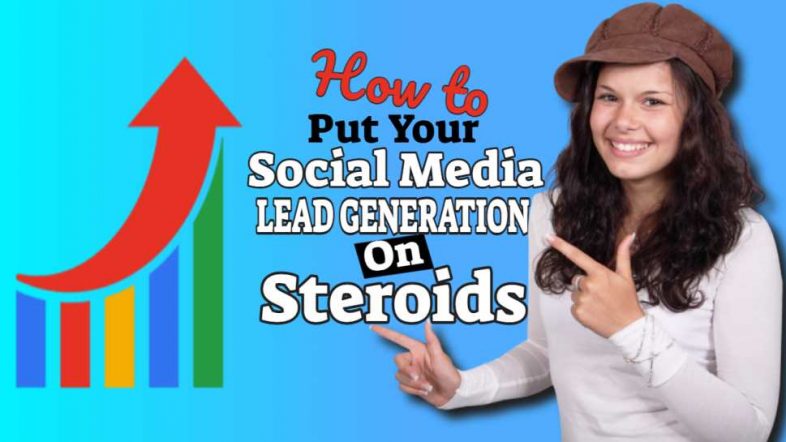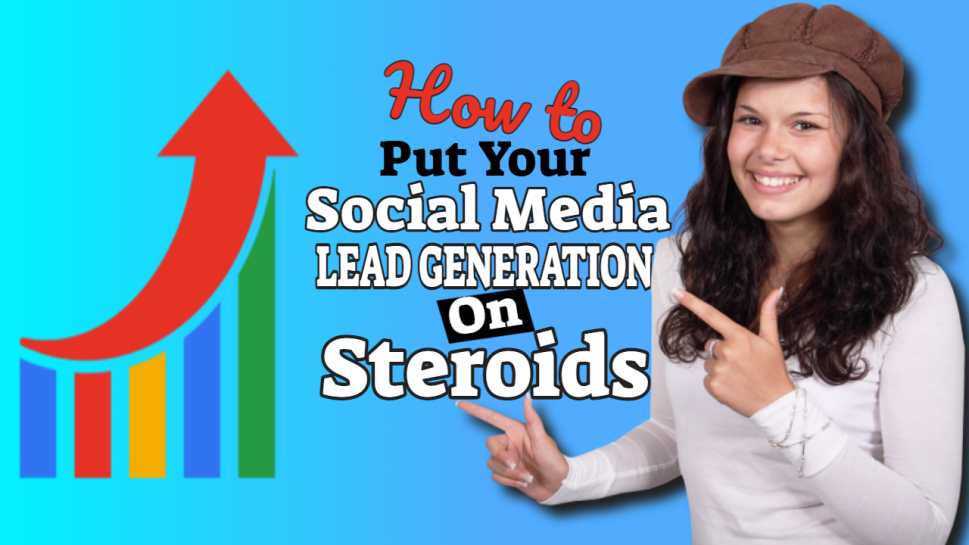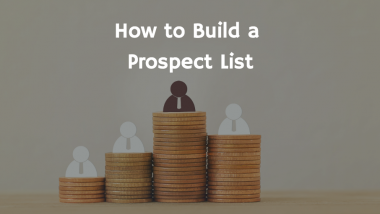Nothing will put Your Social Media Lead Generation on steroids more than gorgeous, on-brand images and lively language. Do that, and keep doing it, and you will gain a substantial social following in the channels that matter most for your industry. You'll also get leads coming through and happy clients.
So, how is it done? The answer is by optimizing your social media lead generation so that it converts as many as possible of your engaged audience into clients and customers.
Social media lead generation
Social media lead generation is the process of turning brand awareness and interest, into visitor actions, such as:
- Signing up for your weekly newsletter
- Accessing an ebook or white paper
- Signing up for a free trial of your service
- Attending a virtual event
- Engaging with a chatbot.
People who take any of these first steps are more likely to take the next and the next. They’ve demonstrated more-than-passing interest in your products or services and can evolve into high-value, qualified leads — provided you build trust and offer genuinely helpful content along the way.
Social Media Lead Generation Tools Social Media Ad Retargeting Tools
Ads on social media are a must for any enterprise business. You already use them to raise brand awareness across platforms and then retarget ads to people who visit your website. But generating more warm leads takes retargeted social media ads segmented to address particular interests or pain points.
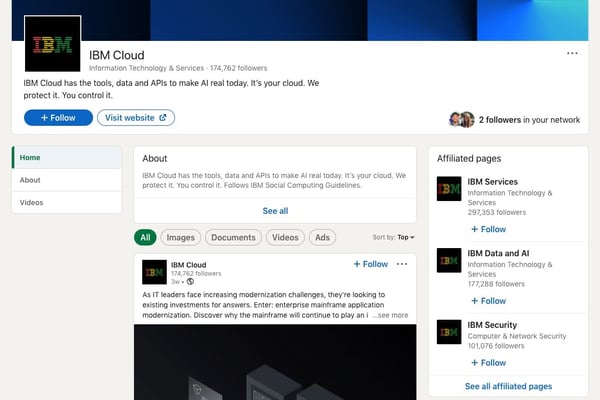
Image source: IBM Cloud
For example, retargeted ads for B2B website visitors who explored introductory guides should be different than ads for visitors who explored more complex topics. Tools to help you dive deeper and segment site visitors for retargeting:
1. Google Analytics – Tracking inbound leads generated through social media will quickly pinpoint which social platforms perform best for your business, as well as what is the most effective messaging and images for your audience.
2. Facebook Custom Audiences – The platform allows you to target custom audiences through website visitors and people who have already engaged with your Facebook ads. To track website visitors for audience customization, you need to add a Facebook pixel to your website. Once you’ve installed pixel, you can create retargeted ads for people who have visited a specific blog post or the product page.
3. YouTube Audience Manager – This is an excellent way to create sequential retargeted ad campaigns for specific audiences. The first step is to link your YouTube channel with your Google Ads account. Then, through Audience Manager, you can create audience lists of people who watched a specific video or channel page.
4. LinkedIn Showcase and Affiliated Pages – Separate from your company page, showcase pages spotlight specific product offerings and initiatives. They are featured on your main page, but they have different audiences and their own followings. For example, IBM features a showcase page for IBM Cloud (pictured above) with nearly 180,000 followers interested in keeping up with that service.
5. Twitter Custom Audiences – Segment your audience for retargeting campaigns based on website or app activity. Your custom audience must be greater than 100 Twitter users to trigger retargeting.
6. Instagram Engagement Custom Audience – Create custom audiences based on website activity, shares, and likes, among other options. Instagram also retargets seamlessly with Facebook, its parent company.
7. AdRoll – This company is known for their retargeting options, including detailed audience segmentation and exclusions triggered by specific parameters. No more flooding customers with ads or sending an ad for a product they purchased yesterday.
8. Perfect Audience – Perfect Audience is an affordable retargeting option for smaller companies that need to keep the process efficient and simple.
Conversational Landing Pages
Nobody puts chatbot in a (lower-left) corner. At least, not on conversational landing pages. Visitors feel more in control of the experience because they can get answers to their high-level questions immediately and choose their next steps from multiple options presented by the chatbot.
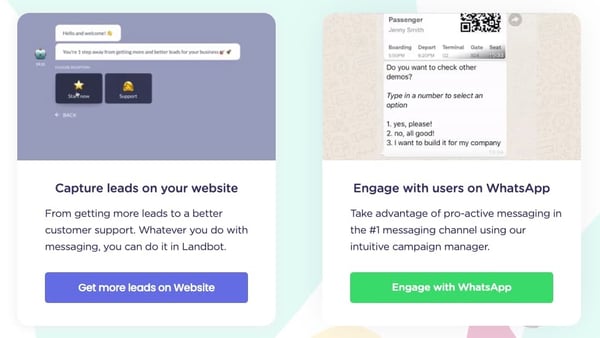
Image source: Landbot
Conversational landing pages are excellent options for freemium tool pages, complex product pages, and product education sign-up pages. They are popular for B2B landing pages in particular because of the subject-matter complexity in comparison to ecommerce.
9. Landbot – This chatbot platform lets you build a customized conversational landing page. Coding skills not required. The chatbot guides visitors through ‘choose your own adventure’ prompts, so they get the answers they need.
Video Tools for Lead Generation
Engaging, polished, and informative videos are powerful lead generation tools. They can answer customer questions before they’re asked and clarify your value proposition for visual learners.
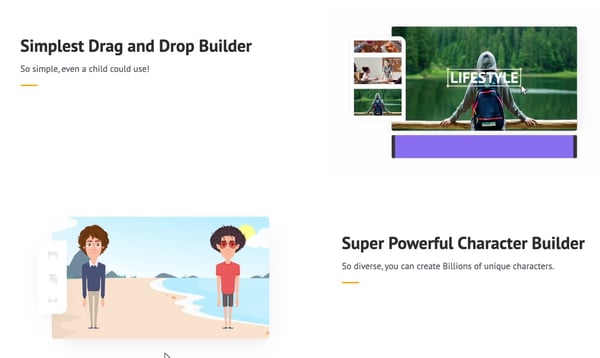
Image source: Animaker
You can use video to capture attention and educate on social media ads, landing pages, and product pages.
10. Biteable – This program reduces the intimidation factor of video and animation production. Their homepage trumpets the ability to make professional videos “on your lunch break.” The top-tier plan allows collaborative editing, production assistance, custom branding, and access to 1.8 million images and clips sans watermark. Be sure to include closed captioning to make the video accessible — and for those who watch social videos with the sound off.
11. Animaker – Animated videos get attention and can be more cost-effective than live-action video production. Animaker streamlines the process for companies with their enterprise option.
12. Shakr – This video making technology for start-ups and global enterprises includes A/B testing, creative services, and support with video ad campaign set up.
13. Magisto Video Editor – An online video editing tool that uses AI to highlight the most emotional moments of your footage, so you can create videos that connect and inspire.
A/B and Multivariate Testing Tools
Small and large changes to your landing pages and your social media ads can make or break a campaign’s lead generation success. With A/B testing you test two distinct options to see which performs better. You can test the design of an entire landing page or a single element, such as a form or CTA.
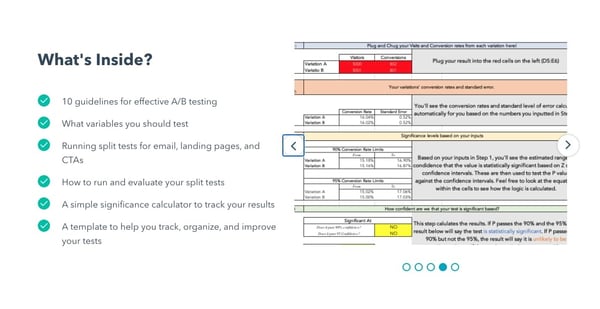
Image source: HubSpot
Multivariate testing is more complex and measures the impact of several subtle changes on a webpage. Here, you may test different copy options for your landing page H1 and the CTA to discover which combination is most effective for lead generation.
14. Optimizely – This company is all about digital experimentation, making them a strong partner for A/B and multivariate testing. You can do both testing styles with the Optimizely Web Experimentation tool, but only A/B testing with Optimizely Performance Edge.
15. HubSpot – You can conduct A/B and multivariate testing to improve lead generation using the HubSpot CRM. Set up an A/B test of a landing page to see which option results in more form completion. Or, set up multivariate tests to determine whether a distinct combination of copy and background colour results in more downloads of a whitepaper.
Social Listening and Competitor Research Tools
These tools track what people are saying about your company and the products and services of your competitors. What do people like? Where do your competitors fall short? This can help you tweak your ad and landing page copy to address frustrations and stand apart from the crowd.
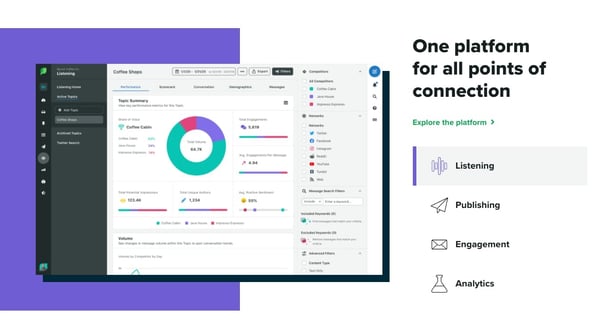
Image source: Sprout Social
16. Hootsuite Insights – This tool lets you track millions of mentions across the major social media platforms, as well as in online forums, the news, and review sites. You can track social sentiment around your brand and industry keywords, as well as social mentions of your competitors.
17. Sprout Social – The social media management tool boasts detailed competitor analysis in its Premium and Advanced plans. To compare your brand’s performance with competitors, Sprout Social breaks reports down by earned (organic) and owned (brand-driven) content and by social platform. This allows you to expand on what’s working and adjust what’s not working.
18. BuzzSumo Competitor Intelligence – This tool helps you track the content that works for your competitors, as well as the content that falls short. Use this information to create content, social campaigns, and landing pages that leverage engaging topics across your industry.
Social Graphics Tools
Original, vibrant graphics capture attention on the feed. Here are a few tools to help you create scroll-stopping images.

Image source: Word Swag
29. Canva – This easy-to-use design tool lets you create social media graphics using ready-to-customize templates or your own designs.
20. Word Swag – This one is for the font fanatics in the crowd. Use Word Swag to create text-only social graphics. You can even A/B test how your text-only social ads perform for lead-generation against ads that blend images and text.
Landing Page Optimization Tools
Without a sharp landing page, your inbound lead generation via social media will fall flat. You want your landing page to be frictionless, with information that meets the expectations you set up in your social post, exact next steps, and engaging CTA button.
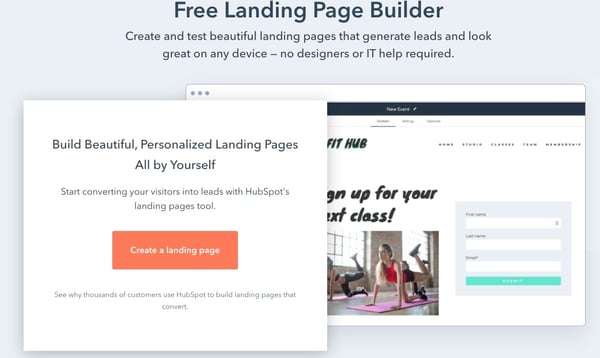
Image source: HubSpot
Once visitors fill out a form, don’t forget the personable thank-you page that offers a discount, related blog post links, or simply a compelling or charming on-brand image.
21. HubSpot Landing Page Builder – HubSpot’s Landing Page Builder helps you optimize with one-click forms and dynamic content that changes depending on who is visiting the page (first-timers or repeat visitors). HubSpot lets you track the inbound traffic from social media and the performance of CTAs. A/B or multivariate testing will also help optimize the page.
22. Unbounce – The landing page builder and platform helps users create branded pages with an easy drag-and-drop interface. Unbounce specializes in SaaS, eCommerce, and agency landing pages. It’s Social Ads solution helps you create ad-customized landing pages and customizable forms designed to capture more qualified leads.
Social Media Lead Generation Statistics
- 59% of marketers say social media marketing is one of the most effective tactics for improving lead generation quality. (Ascend2)
- 61% of marketers say lead generation is their top marketing challenge. (Hubspot)
- 67% of marketers say social media marketing generates leads. (Social Media Examiner)
- Approximately 96% of website visitors are NOT ready to make a purchasing decision. (Marketo)
- You have less than 15 seconds to capture the attention of website visitors before they leave. (Crazy Egg)
- 72% of adults in the US use at least one social media platform. (Pew Research Center) 73% of adults in the US use YouTube. (Pew Research Center)
- 69% of US adults use Facebook. (Pew Research Center)
- 89% of consumers buy from brands they follow on social media. (Sprout Social) In 2020, global digital ad spend is estimated to be $385 billion. (eMarketer)
- 56% of marketers say sales revenue generated is the most useful metric for measuring lead generation quality. (Ascend2)
- 54% of marketers say they measure lead quality continuously. (Ascend2)
- 66% of marketers say they generate social media leads with only six hours of social marketing per week. (Social Media Examiner)
- 74% of marketers with more than four years of experience in social media marketing say their lead generation proficiency improved. (Social Media Examiner)
How to Measure Lead Generation for Social Media
Analyze, adjust, repeat. It’s a marketing mantra across strategies for good reason, and social media lead generation should be part of your analysis. Here are the essential metrics to track and analyze:
Click-through rate – This metric shows whether you are effectively segmenting audiences for your social ads. If you speak to your customers’ interests, questions, and pain points, your CTR percentage will be higher.
The CTR is calculated by dividing the number of clicks on your social media ad with the number of ad impressions and multiplying the result by 100. That is your CTR percentage for a given ad or campaign.
Conversion rate – This measures the number of people who took the lead generation action you wanted your social ad to prompt, such as joining your newsletter, downloading a whitepaper, or requesting a quote.
Leads per channel – Knowing how many leads you get per channel often tells you where your customers prefer to engage and where you should focus your social ad spend. However, if your campaigns aren’t generating leads on platforms known to yield results for your industry, you may need to A/B test or rethink your social ads strategy on that channel.
Form abandonment – If your form abandonment rate is high, there may be one too many information requirements. Business leads may be hesitant to give their full name, email, company name, and cell phone number.
Leads to qualified leads
How many of the leads you generate via social media are truly qualified? That means they successfully resulted in sales or were, at the least, promising for future business.
To get the qualified lead percentage, divide qualified leads by the total number of leads and multiply by 100. To make improvements, you may need to further refine your social media messaging for your target audience.
It’s tempting to set your social media lead generation strategy to autopilot, especially when you get positive results. But gaining a better understanding of your audience and fine-tuning your social ads can deepen trust, enhance your lead generation, and significantly boost their quality.
